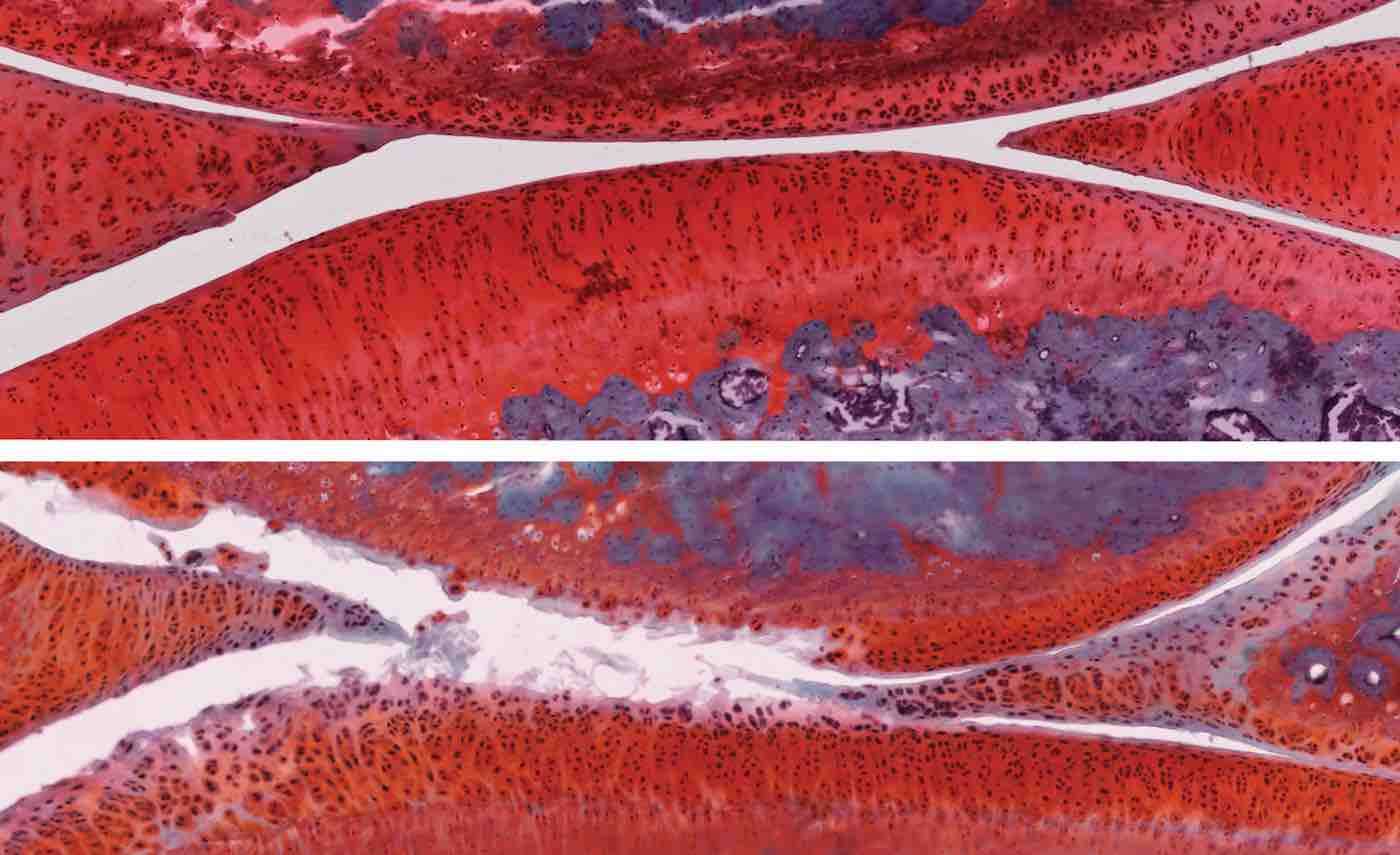Scientists Discover New Strategy That May Protect Against Hair-Loss During Cancer Treatments
The discovery could lead to a new class of treatments for preventing hair loss during chemotherapy.

People with osteoarthritis-"wear and tear" arthritis-have had, in the past, limited treatment options, either pain relievers or joint replacement surgery.
Now, Salk researchers have discovered that a powerful combination of two experimental treatments reverses the cellular and molecular signs of osteoarthritis in rats as well as in isolated human cartilage cells. Their results were published in the journal Protein & Cell earlier this week.
"What's really exciting is that this is potentially a therapy that can be translated to the clinic quite easily," says Juan Carlos Izpisua Belmonte, lead author and a professor in Salk's Gene Expression Laboratory. "We are excited to continue refining this promising combination therapy for human use."
Affecting 30 million adults, osteoarthritis is the most common joint disorder in the United States and its prevalence is expected to rise in coming years due to the aging population and increasing rate of obesity. The disease is caused by gradual changes to cartilage that cushions bones and joints. During aging and repetitive stress, molecules and genes in the cells of this articular cartilage change, eventually leading to the breakdown of the cartilage and the overgrowth of underlying bone, causing chronic pain and stiffness.
Previous research had pinpointed two molecules, the protein alpha-KLOTHO and the gene TGF beta receptor 2 (TGFβR2), to potentially treat osteoarthritis. αKLOTHO acts on the mesh of molecules surrounding articular cartilage cells, keeping this extra-cellular matrix from degrading. TGFβR2 acts more directly on cartilage cells, stimulating their proliferation and preventing their breakdown.
While each one alone had only moderately curbed osteoarthritis in animal models of the disease, Izpisua Belmonte and his colleagues wondered if the two together would act more effectively in concert.
"We thought that by mixing these two molecules that work in different ways, maybe we could make something better," says Paloma Martinez-Redondo, a Salk postdoctoral fellow and co-first author of the new study.
The researchers treated young rats with osteoarthritis using viral particles containing the DNA instructions for making αKLOTHO and TGFβR2.
Six weeks after the treatment, rats that had received control particles had more severe osteoarthritis in their knees, with the disease progressing from stage 2 to stage 4. However, rats that had received particles containing αKLOTHO and TGFβR2 DNA showed recovery of their cartilage: the cartilage was thicker, fewer cells were dying, and actively proliferating cells were present. These animals' disease improved from stage 2 to stage 1, a mild form of osteoarthritis, and no negative side effects were observed.
"From the very first time we tested this combination on just a few animals, we saw a huge improvement," says Isabel Guillen-Guillen, the paper's co-first author. "We kept checking more animals and seeing the same encouraging results."
Further experiments revealed 136 genes that were more active and 18 genes that were less active in the cartilage cells of treated rats compared to control rats. Among those were genes involved in inflammation and immune responses, suggesting some pathways by which the combination treatment works.
To test the applicability of the combination to humans, the team treated isolated human articular cartilage cells with αKLOTHO and TGFβR2. Levels of molecules involved in cell proliferation, extra-cellular matrix formation and cartilage cell identity all increased.
The research team plans to develop the treatment further, including investigating whether soluble molecules of the αKLOTHO and TGFβR2 proteins can be taken directly, rather than administered through viral particles. They also will study whether the combination might prevent the development of osteoarthritis before symptoms develop.
Reprinted from the Salk Institute
Be Sure And Share The Good News With Your Friends By Sharing It To Social Media…
Be the first to comment